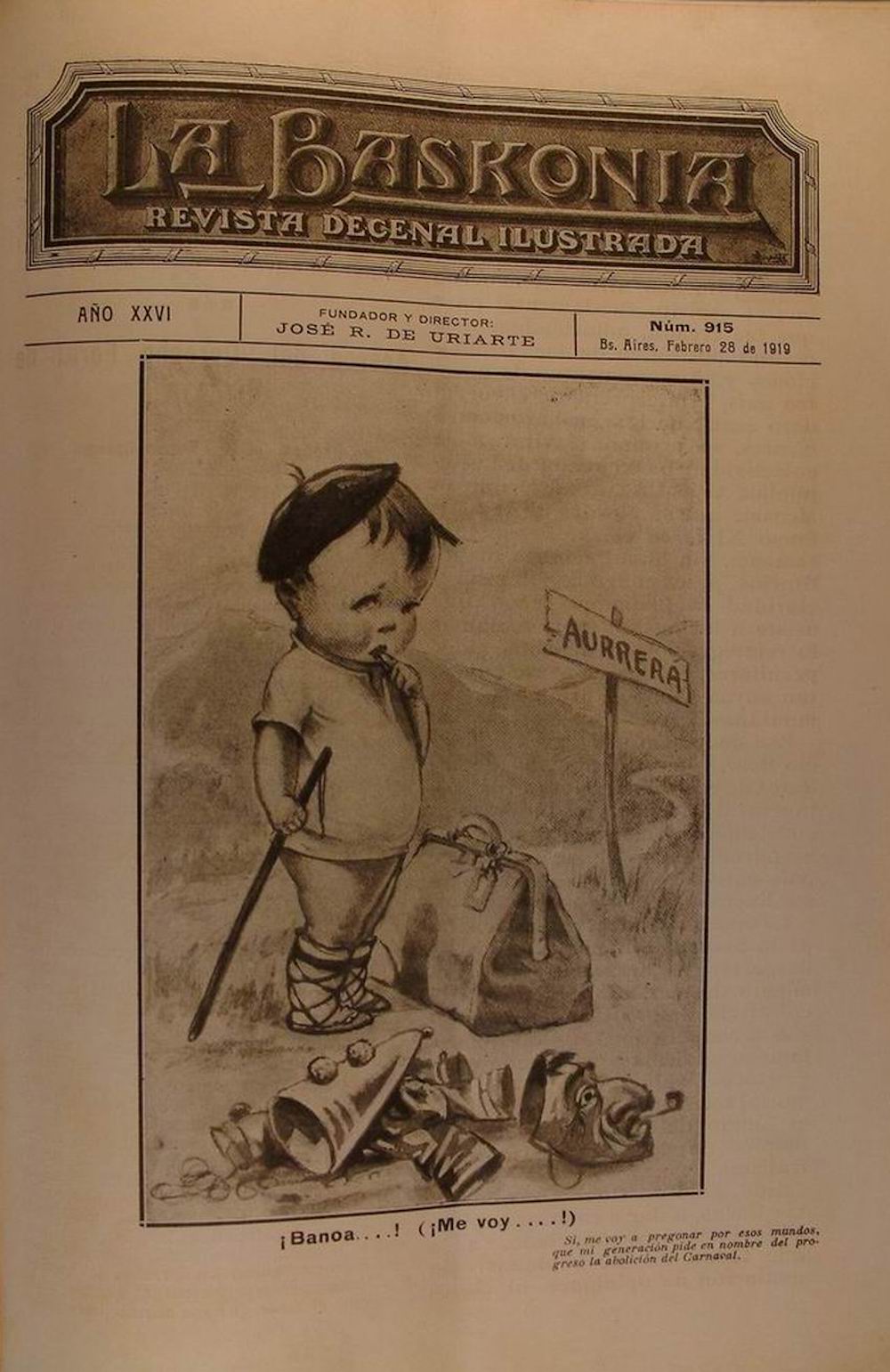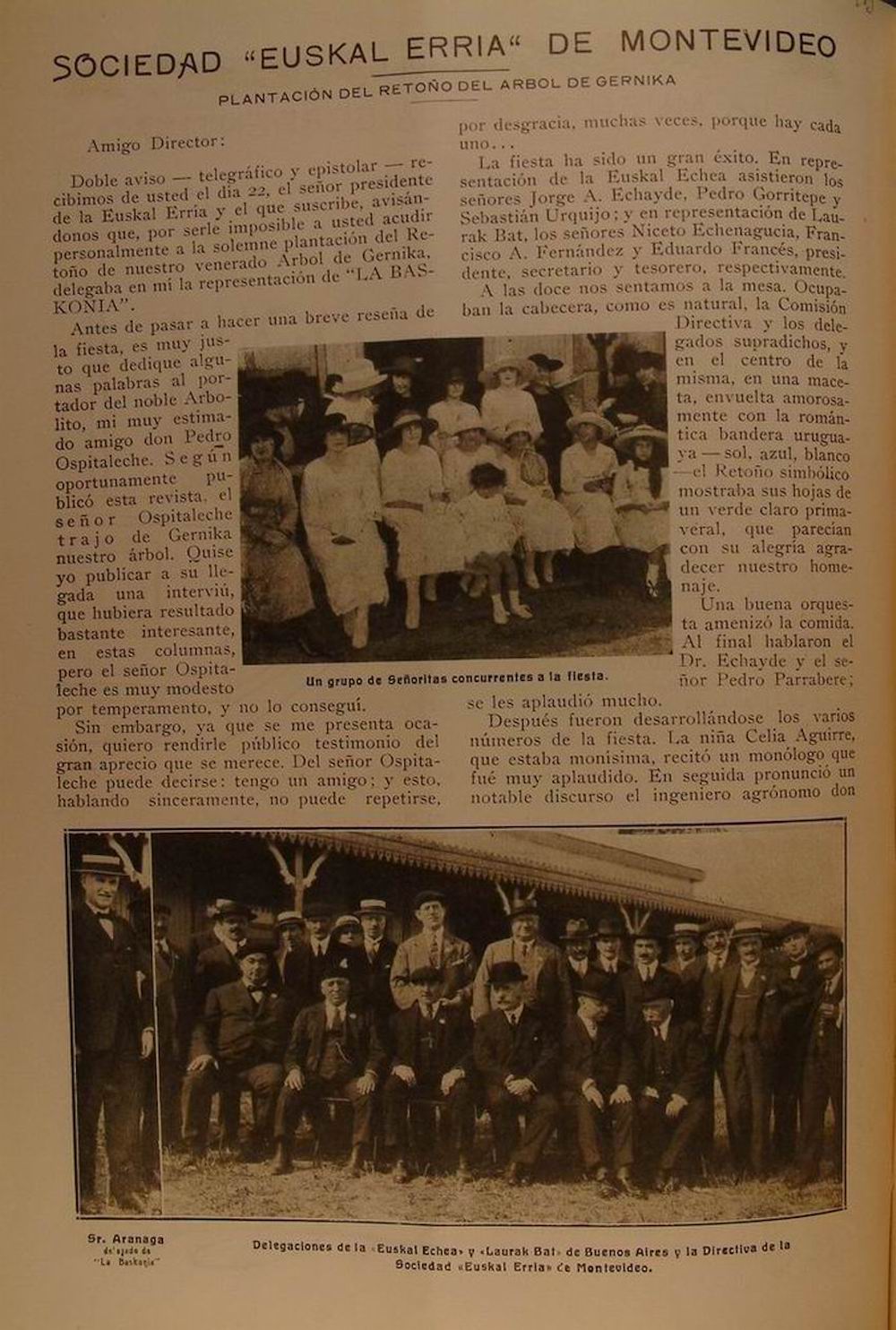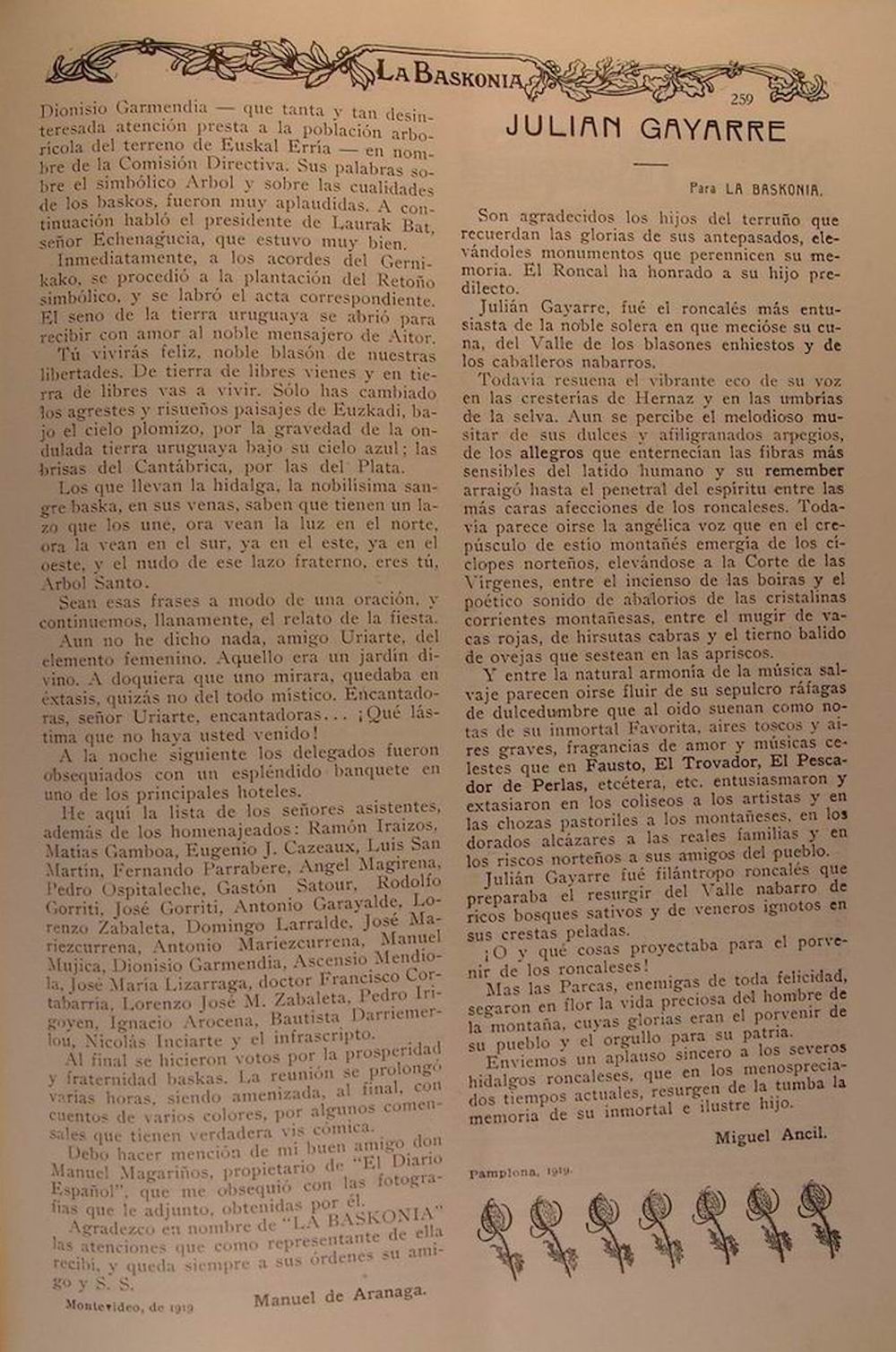Our sacred tree, our tree of freedom, the Tree of Guernica, has saplings all over the world. As Iparraguirre penned in his powerful anthem Gernikako Arbola, written at a time when the Southern Basques were watching as their freedoms were being stolen by the Kingdom of Spain:
| «Eman ta zabal zazu munduan frutua adoratzen zaitugu arbola santua» |
Give and spread your fruit in the world, we adore you, Sacred Tree. |
And so it has been. Since the 19th century, the saplings of this symbol of Basque sovereignty, of its laws and freedoms, of its parliaments, have been taken in by people from every corner where Basques have settled. Far from their homeland, either in search of a better life or to escape persecution, wherever they settled, sooner or later they would plant a sapling to remember who they were, where they came from, and what the soul of their land of origin is.
Uruguay, a land of Basques, was one of the first places where Basques got organized after the birth of the Latin American republics. While they had been organized earlier, since the 17th century, as brotherhoods and guilds, in the 19th century, they adopted a new method of organization: the Basque centers. These fulfilled, and fulfill, the mission to be meeting places, and in many cases, the mutual support societies that sought to meet the needs of the local Basque community through solidarity and cooperativism.
The first Basque center in Uruguay was founded in the capital, Montevideo, in 1876. That date is no coincidence. It’s the same year the last of the Basque freedoms were squashed by the strength of liberal weapons, and the Juntas Generales were dissolved. Another 120 years would have to pass before they could meet again.
That triggered a movement of social and political awareness-raising among the Basques in the New World, which was reinforced by the arrival of many Basque exiles, from all parts of the homeland, who were fleeing the persecution of the “standardization” of Spanish and French liberalism or who refused to serve in their armies. This would then exmplain the birth, almost at the same time, of a similar organization with the same name on the other side of the River Plate, in Buenos Aires.
The name, too, is not without meaning. “Laurak Bat“, “Four in One”, referring to the four territories of the Southern Basque Country, Alava, Biscay, Gipuzkoa, and Navarre.
We’re bringing all this up today because this past Sunday, the Uruguayan daily El País published an amazing article by Andrés López Reilly telling the story of those saplings of our Sacred Tree in that country.
We encourage you to read them, because the story of the Basques in Uruguay, much like in the rest of the world, is a meaningful, fundamental, part of the history of our Homeland.
But we couldn’t help leaving you with a copy of the poem published by La Baskonia de Buenos Aires when, in 1919, (the article got the year off by one and wrote 1918) the Basque Fraternal Society Euskal Erria in Montevideo, founded in 1912, planted the first official sapling of the Tree of Guernica in Uruguayan soil on their lands. The poem, by author and journalist Manuel Aránaga, accompanied the chronicle of the event:
«Tú vivirás feliz, noble blasón de nuestras libertades. De tierra de libres vienes
y en tierra de libres vas a vivir. Sólo has cambiado los agrestes y risueños paisajes de Euzkadi; bajo el cielo plomizo, por la gravedad de la ondulada tierra uruguaya bajo su cielo azul; las brisas del Cantábrico, por las del Plata.»
You will live happily, noble blazon of our freedoms. From the land of the free you come, and in the land of the free you shall live. You have only changed the rough and cheerful landscapes of Euzkadi, under the leaden sky, for the graveness of the rolling Uruguayan lands under their blue skies; the breezes of the Bay of Biscay for the those of the River Plate
  |
  |
  |
Copy of Buenos Aires ‘La Baskonia’ from February 28, 1919, where Manuel Aránaga chronicles the planting of the sapling of the Tree of Guernica in Montevideo (click on the images to enlarge). Documents collected by Urazandi Digital at euskaletxeak.eus, a true gem where you can find copies of Basque publications from all over the world
This text brings us the feelings of those Basques who, in the Diaspora, took on the Basque national claims that were born in the suppression of the fueros. This can be seen in the fact that the event was attended by the President of Laurak Bat de Buenos Aires in 1903 when paying homage to Sabino Arara and the Ikurriña.
Along with the article from El País, we’d also like to share a video on the same topic that was put together by the Zumalakarregi Museum.
El País – 2/5/2021 – Uruguay
La historia del árbol de Guernica: una semilla vasca que floreció en todo el Uruguay
Si bien es universalmente conocida la obra Guernica en la que Pablo Picasso plasmó su denuncia a quienes desencadenaron la guerra civil española y destruyeron esta ciudad sagrada para los vascos, poco se sabe de la historia de la Villa de Gernika (como se escribe en euskera), que se remonta varios siglos antes de ser bombardeada por las fuerzas aéreas combinadas de Alemania, Italia y España, en aquel trágico 26 de abril de 1937. Menos se conoce que de esa zona proviene un roble cuyas semillas han ido a parar a los rincones más remotos, entre ellos Uruguay, como símbolo de la cultura y de la migración vasca por el mundo.
(Sigue) (Traducción automática)
Header photo: Photo of the Tree of Guernica planting ceremony in Montevideo in February 1919. You can see the large Ikurriña that still had the original width on the crosses as originally designed by the Arana brothers.


Last Updated on May 5, 2021 by About Basque Country




























